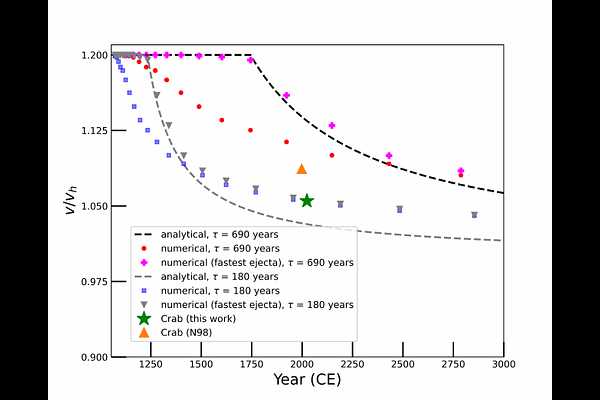The Non-Uniform Expansion of the Crab Nebula

The Non-Uniform Expansion of the Crab Nebula
T. Martin, D. Milisavljevic, T. Temim, S. Mandal, P. Duffell, L. Drissen, Z. Ding
AbstractWe present extensive proper motion measurements of the Crab Nebula made from Canada-France-Hawaii Telescope MegaPrime/MegaCam images taken in 2007, 2016, and 2019. A total of 19974 proper motion vectors with uncertainty $<10$\,mas\,yr$^{-1}$ located over the majority of the Crab Nebula are used to map the supernova remnant's two-dimensional expansion properties that reflect the dynamics of the original explosion, acceleration of ejecta imparted by spin-down energy from the pulsar, and interaction between the ejecta and surrounding cicumstellar material (CSM). The average convergence date we derive is 1105.5 $\pm$ 0.5 CE, which is 15-35 yr earlier compared to most previous estimates. We find that it varies as a function of position angle around the nebula, with the earliest date and smallest proper motions measured along the equator defined by the east and west bays. The lower acceleration of material along the equatorial plane may be indicative of the supernova's interaction with a disk-like CSM geometry. Comparing our measurements to previous analytical solutions of the Crab's expansion and our own numerical simulation using the moving mesh hydrodynamics code \texttt{Sprout}, we conclude that the ejecta have relaxed closer to homologous expansion than expected for the commonly adopted pulsar spindown age of $\tau \sim 700$ yr and a pulsar wind nebula (PWN) still evolving inside the flat part of the ejecta density profile. These findings provide further evidence that the PWN has broken out of the inner flat part of the supernova ejecta density profile and has experienced ``blowout''.